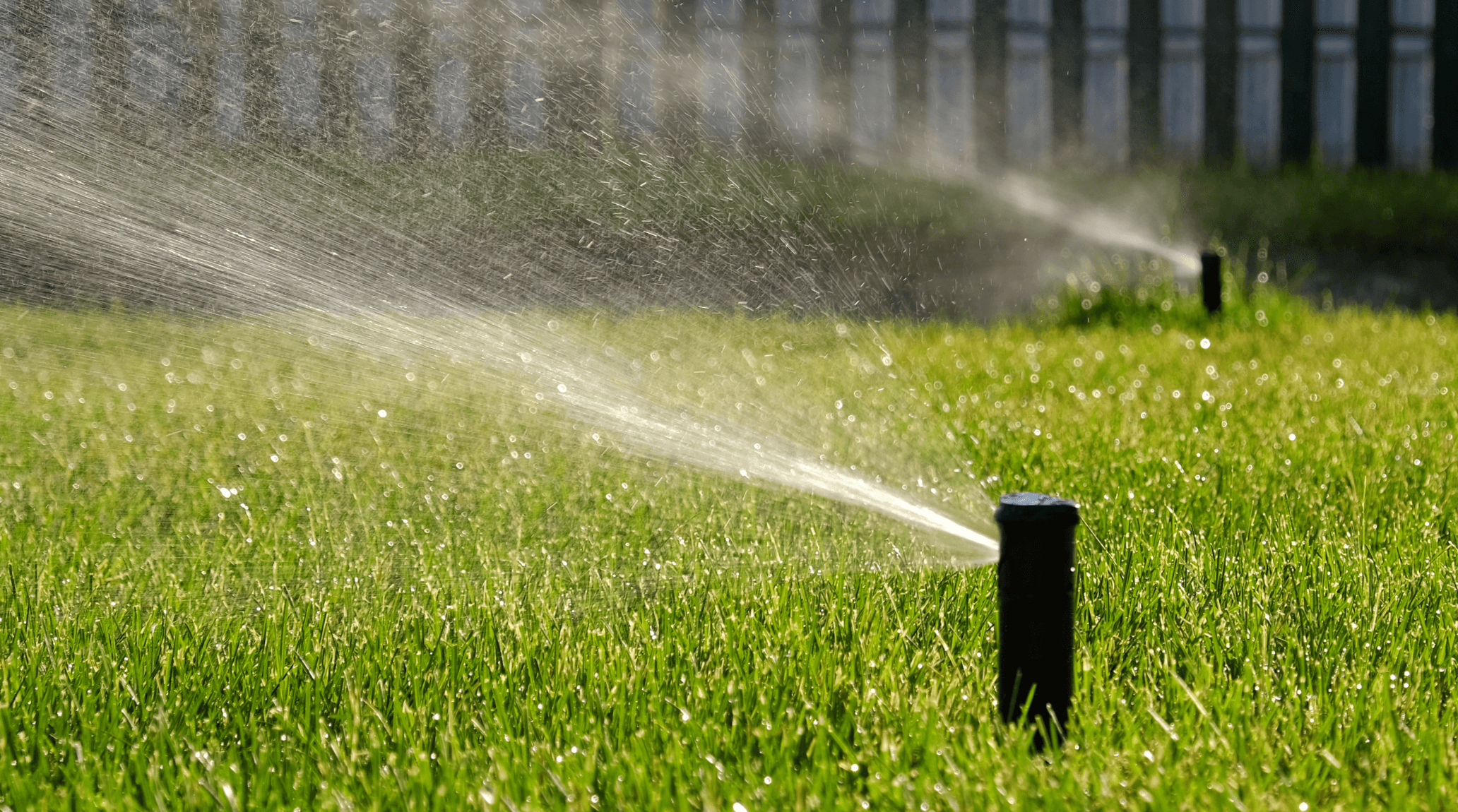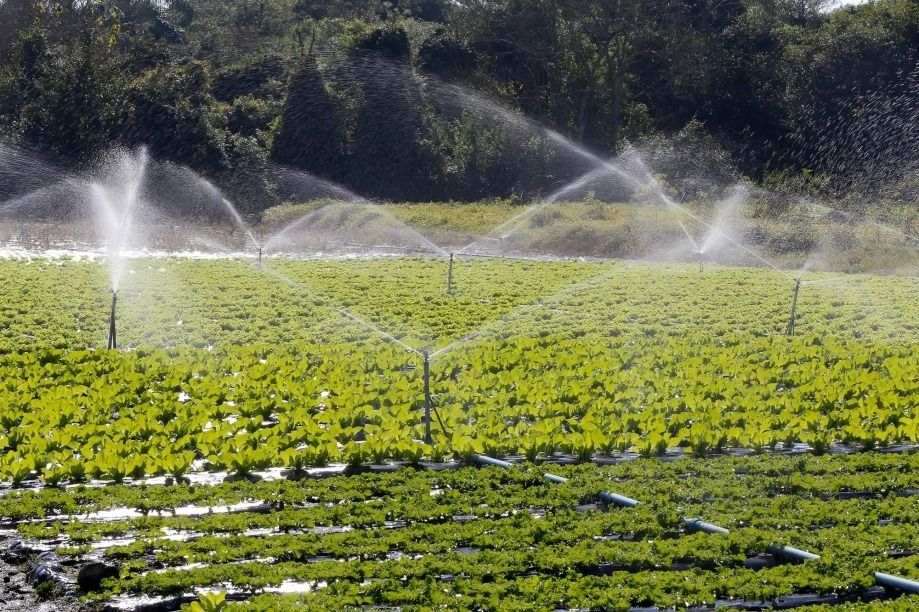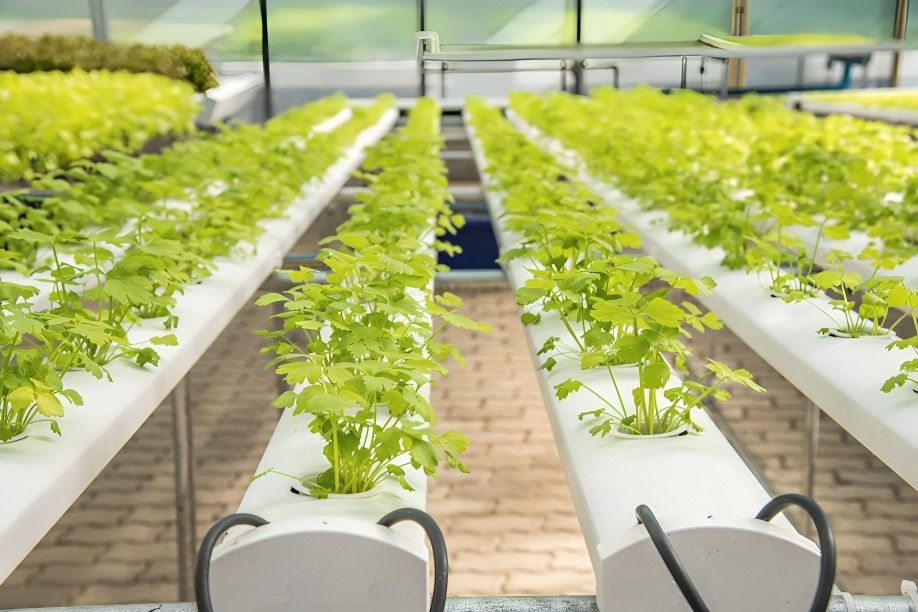
“
Water uses in agriculture are essential for food production and sustaining crops. It plays a crucial role in irrigation, ensuring that plants receive the necessary moisture for growth and development. From large-scale farming to small family gardens, water is a key resource for maintaining healthy soil and optimizing crop yields. Effective water management practices, such as drip irrigation and rainwater harvesting, can improve water efficiency and reduce waste. Understanding the importance of water use in agriculture helps highlight its impact on food security and the need for sustainable practices to conserve this valuable resource for future generations.1
1
”
Aquaponics combines fish farming with hydroponics, using fish waste to nourish plants. This sustainable, water-efficient system requires 90% less water than conventional farming, offering a promising solution for food production in water-scarce regions. 1
Rice cultivation consumes around 2,500 liters of water per kilogram produced, making it one of the most water-intensive crops globally. This highlights the importance of improving water management practices in agriculture to ensure sustainable production. 2
In regions like India and California, excessive reliance on groundwater for irrigation has led to significant depletion, posing a threat to long-term agricultural sustainability and highlighting the need for alternative water management strategies. 3
Precision agriculture employs sensors and satellite data to monitor soil moisture in real time, allowing farmers to optimize water use. This innovative approach helps improve crop yields while conserving precious water resources. 4

Drip irrigation systems deliver water directly to plant roots, saving up to 50% more water than traditional methods, greatly enhancing water efficiency in agriculture, and reducing the overall water needed for crop production.
Farmers in arid regions increasingly use rainwater harvesting to collect and store rainwater for use during dry periods. This method reduces dependence on external water sources, making agriculture more resilient to water scarcity. 5
Agroforestry, which integrates trees into agricultural land, enhances biodiversity and helps retain soil moisture. This reduces the need for additional irrigation, making it a valuable practice for sustainable agriculture.6
Advanced software for irrigation scheduling can predict the exact timing and amount of water needed for crops. This technology reduces water waste, improves water use efficiency, and ensures crops receive adequate hydration.7
In areas with high soil salinity, farmers grow crops like quinoa and barley using salt water. This innovative practice offers a solution to water scarcity in coastal regions, expanding agricultural possibilities in challenging environments.8
Agriculture accounts for approximately 70% of global freshwater withdrawals, making it the largest consumer of water. Efficient water management in agriculture is crucial to ensuring sustainable food production and conserving water resources.9
The concept of a water footprint is gaining traction, encouraging farmers and consumers to be more aware of the water used in food production. This awareness is driving the adoption of more sustainable agricultural practices. 10
In hot climates, water is often used for crop cooling through methods like evaporative cooling, which helps to prevent heat stress on plants. This practice is essential for maintaining plant health and maximizing agricultural yields.11
Fertigation, where fertilizers are applied through irrigation systems, ensures that nutrients are delivered directly to plant roots. This method minimizes both water and fertilizer waste, enhancing the efficiency of agricultural practices.12
Livestock, including cattle, poultry, and pigs, require a consistent supply of drinking water to maintain their health and hydration. Adequate water availability is crucial for ensuring optimal livestock production and overall animal well-being.13

Hydroponic systems grow plants without soil, using up to 90% less water than traditional farming methods. This makes hydroponics an ideal solution for urban and arid environments where water resources are limited.
The energy required to pump, treat, and transport water for agriculture is significant, making energy-efficient irrigation systems increasingly important as part of the water-energy nexus in sustainable farming.14
In response to climate change, some farmers are adjusting planting seasons and crop varieties to better align with changing water availability, demonstrating adaptability in agricultural practices.15
In response to climate change, some farmers are strategically adjusting planting seasons, crop varieties, and irrigation methods to better align with shifting water availability, showcasing their adaptability and resilience in agricultural practices. 16
Water rights for agriculture are a contentious issue in many regions, with farmers competing for limited resources. This often leads to legal and political challenges, highlighting the complex relationship between water use and agriculture. 17
Farmers are increasingly shifting to drought-tolerant livestock breeds that require less water and are better suited to arid environments. This contributes to sustainable livestock farming by reducing the overall water demand in agriculture. 18


